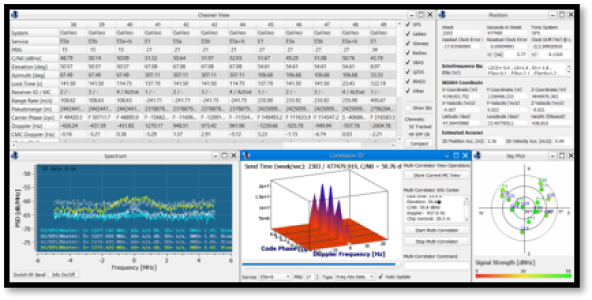Architectures for wide-band meta-signal processing in low cost devices

To demonstrate the technology to achieve sub-meter level position accuracy based on meta-signal code pseudoranges in harsh propagation conditions with hand-held devices.
The exploitation of the wide bandwidth signals in the lower GNSS L-band is expected to be of interest for mass-market user equipment (UE) in order to improve significantly code-based position accuracy in location-based services. In this context, E5 AltBOC signal is of particular interest, being the signal with the widest bandwidth in that band, and one of the key differentiators of Galileo.However, the exploitation of such signal is not yet a reality because its conventional implementation, as in professional receivers, is too complex for the mass-market UE and also sub-optimum for the harsh environments in which they often operate. Meanwhile, the concept of meta-signal processing has arisen in the GNSS community as an alternative to complex wideband signals processing. The activity targets the development of novel architecture and algorithms to enable the processing of the ALTBOC signal on early breadboarding representative of low cost UE and with this, enable sub-meter level accuracy in harsh propagation conditions.This activity encompasses the following tasks:- Review of state-of-the-art (e.g. meta-signal processing, wide-band signals processing on handheld UE, etc.)- Trade-off analysis of innovative techniques and selection the most promising for their implementation with breadboards- Detailed design, implementation and integration of the architecture/techniques proposed in breadboards to demonstrate the concept- Laboratory testing followed by field testing and benchmarking, in representative harsh propagation conditions
